Filipino Pancit Canton- Egg Noodles with Chicken and Vegetables
As an Amazon Associate and member of other affiliate programs, I earn from qualifying purchases.
The merienda spread looked inviting laid out on the dining table that late afternoon. We flew to the Philippines, and visited my hometown, Tarlac last week and in our house, my sister prepared a platter of Pancit Canton, tall glasses of ‘halo-halo’ ( an icy beverage of fruits in syrup) and “tibuk-tibok” (a native cake made of fresh carabao milk and coconut). This was not lunch. This was “merienda” a snack in between meals, a delightful prelude to a later dinner.
Pancit canton (say ‘panh-seet kan-ton’ ) is a favorite on our table, whether for merienda or a regular dinner. It contains thick yellow egg noodles and is stir fried with various vegetables, bite-sized pork or chicken, all put together in a cornstarch-soy thickened sauce.
This is one of the easiest noodle dishes to put together. It starts as a basic stir fry of vegetables and meat and towards the end of cooking, you add the dried ‘canton’ noodles.
“The word ‘pancit’ (or ‘pansit’ in some cookbooks) comes from the Hokkien words ‘pian-e-sit’, which means something that is conveniently cooked, and originally did not mean noodles. The noodle dish eventually was adapted to local ingredients, tastes and occasions.” [Doreen G. Fernandez, “The Noodles of Our Lives” from the book ‘Tikim’]
We enjoyed ‘pancit’ several more times during our brief Philippine visit. Each time was more enjoyable than the last. The pancit canton’s thick Chinese egg noodles were flavored by the soy sauce based broth laced with the citrusy calamansi, the Filipino lime. The bite-sized chicken breast pieces immersed in the thick sauce added a good contrast to the noodles. The assortment of shredded napa cabbage, sliced green beans and bell peppers gave the dish the crunch that comes from fresh vegetables.
Once we finished off the Pancit Canton from our ‘merienda’ plates, we moved on to our next destination, my cousin’s house, where she had a plethora of dinner entrees ready to greet us. Yes, only in the Philippines are meals and eating elevated to a favorite past time. More about the fun Filipino meals we ate during our Philippine visit in forthcoming posts.
Filipino Pancit Canton - Egg Noodles with Chicken and Vegetables
Equipment
- Large Skillet- 12 to 14 inches in diameter; Or a Wok
Ingredients
- 12 ounces dried Pancit Canton noodles (thick Chinese egg noodles)
- 1/2 pound boneless chicken breast
- 4 cups water for pre-boiling chicken
- 4 Tablespoons vegetable oil
- 4 cloves garlic minced
- 1 whole onion chopped
- 1 cup chopped celery
- 1 Tablespoon patis (fish sauce)
- 1 whole medium-sized carrot peeled; sliced
- 1 cup sliced green beans cut into 1-inch pieces
- 2 cups shredded cabbage
- 1/2 whole red bell pepper sliced
- 1/4 cup cornstarch
- 2 Tablespoons soy sauce
- 1/4 cup cold water
- 2 1/2 cups chicken broth
- 1/2 teaspoon sesame oil
- 2 stalks scallions chopped, for garnish
- 1 whole lemon; for the juice
- 1/4 cup soy sauce for a side dipping sauce
Instructions
- Pre-boil the chicken breast in a pot with 4 cups water, for 12 minutes or till tender. When chicken is tender, slice in thin strips and reserve the broth for later. Set aside.
- In a large skillet, over medium high heat, add the vegetable oil. Saute the garlic, onions, celery and patis or fish sauce.
- Add the chicken slices to the hot skillet with the sautéed garlic, onions and celery. Cook for 5 minutes .
- Add the broth. Bring to a boil. This should take about 5 minutes. Lower heat to a slow simmer and stir. Add the green beans, carrots and sliced peppers, and cook for 5 to 6 minutes. Then add the shredded napa cabbage.
- In a separate small bowl, mix together the soy sauce and cornstarch. Add this mixture to the broth. Increase heat slightly till the broth comes to a boil and becomes thick in about 5 minutes. Lower heat to medium low.
- Finally, add the dried canton noodles. Mix all ingredients well, making sure the broth coats the noodles so it can soften. The broth will seem plenty at first, but as the canton noodles soften, the liquid gets absorbed and diminishes. Season with salt and pepper. Cover and allow the noodles to cook. This should take 6 to 7 minutes or till noodles are soft. Do not overcook or the noodles will get mushy. Finish off by adding sesame oil.
- Garnish with chopped scallions. Serve hot.
- Serve on the side: a dipping sauce of soy sauce combined with the juice of a lemon.
- COOK’S COMMENTS: Pancit Canton is a versatile dish. In addition to chicken, you can add pork slices, or peeled shrimps. Other vegetables you can add are regular cabbage, chayote, and even dried mushrooms. If available, use calamansi, the Filipino lime, in place of lemon juice.
- Recipe Notes: Although the photo of the dried noodles package on this post shows the content was 16 ounces, I only used 12 ounces for this recipe, which yielded the right amount of servings for our family of 4.
Nutrition
Notes on Nutrition: The nutrition information provided is an estimate and will vary based on cooking methods and specific brands of ingredients used.
Did you like this recipe?I have more Filipino Instant Pot recipes in my newest cookbook Instant Filipino Recipes: My Mother’s Traditional Philippine Cooking in A Multicooker Pot by Elizabeth Ann Besa-Quirino. I also have more classic recipes inspired by my mother’s cooking in my popular cookbook: My Mother’s Philippine Recipes. If you’re learning how to cook Filipino food or a fan of Philippine cuisine, buy my cookbooks and books on Amazon.com sold worldwide in paperback and Kindle format.
Copyright Notice: Hello, Friends! Please DO NOT LIFT OR PLAGIARIZE my original recipe, stories, photos or videos. All the images and content on this blog are COPYRIGHT PROTECTED and owned by my media company Besa-Quirino LLC. This means BY LAW you are NOT allowed to copy, scrape, lift, frame, plagiarize or use my photos, essays, stories and recipe content on your websites, books, films, television shows, videos, without my permission. If you wish to republish this recipe or content on media outlets mentioned above, please ASK MY PERMISSION, or re-write it in your own words and link back to my blog AsianInAmericaMag.com to give proper attribution. It is the legal thing to do. Thank you. Email me at [email protected]

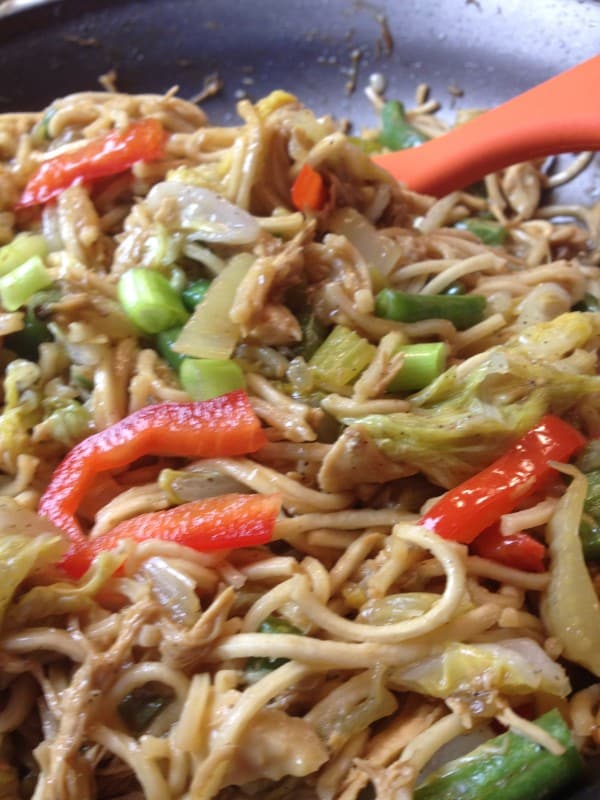


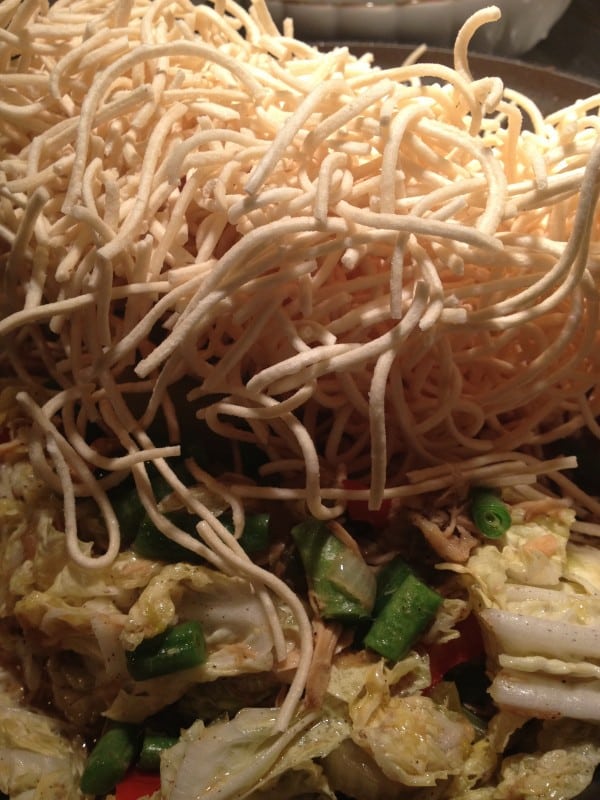



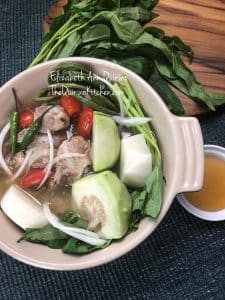
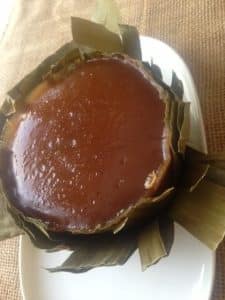
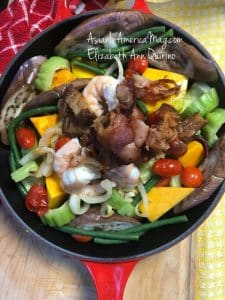

I love noodle stir fries! This looks wonderful!
Hi Laura. Yes, this is a terrific noodle dish and very versatile. You must try it. Thanks for the kind comment 🙂
wow i remember those merienda sessions. we grew up spoiled in the Philippines huh? But yes we eat a lot too hahah!
Enjoy your stay there.
Hugs,
Malou
Thanks, Malou. Isn’t it amazing how much food there is in our meriendas back home? I had to keep reminding my sons it was just a snack and more was to come for dinner. They look puzzled! Lol! Thanks for the blog-visit ~ always a treat to have you come by!
I did not know that the word “pancit” came from a Hokkien root. I always found it interesting that the other kind of pancit is called “bi hon” because it sounds almost exactly like the Taiwanese (really similar to Hokkien) work for rice noodles.
Hi Grace! Yes, isn’t it interesting how the “food world” can unearth so many interesting facts & history of our food. As a result, we find so many things in common with other cultures and countries. Thanks for the kind blog-visit!
I’ve seen these dried noodles but have never used it yet. Kids love noodle dishes and I have to make some changes so they won’t be tired of the same Japanese noodles and some other Asian-style noodle dishes… Thanks for the recipe!
Hi Nami. This is one of my blog’s most popular noodle recipes and a favorite Filipino dish, whether for a meal or snack, “merienda” as we call it. Try it with different meats and vegetables. It’s so easy to feed the kids veggies with this dish!